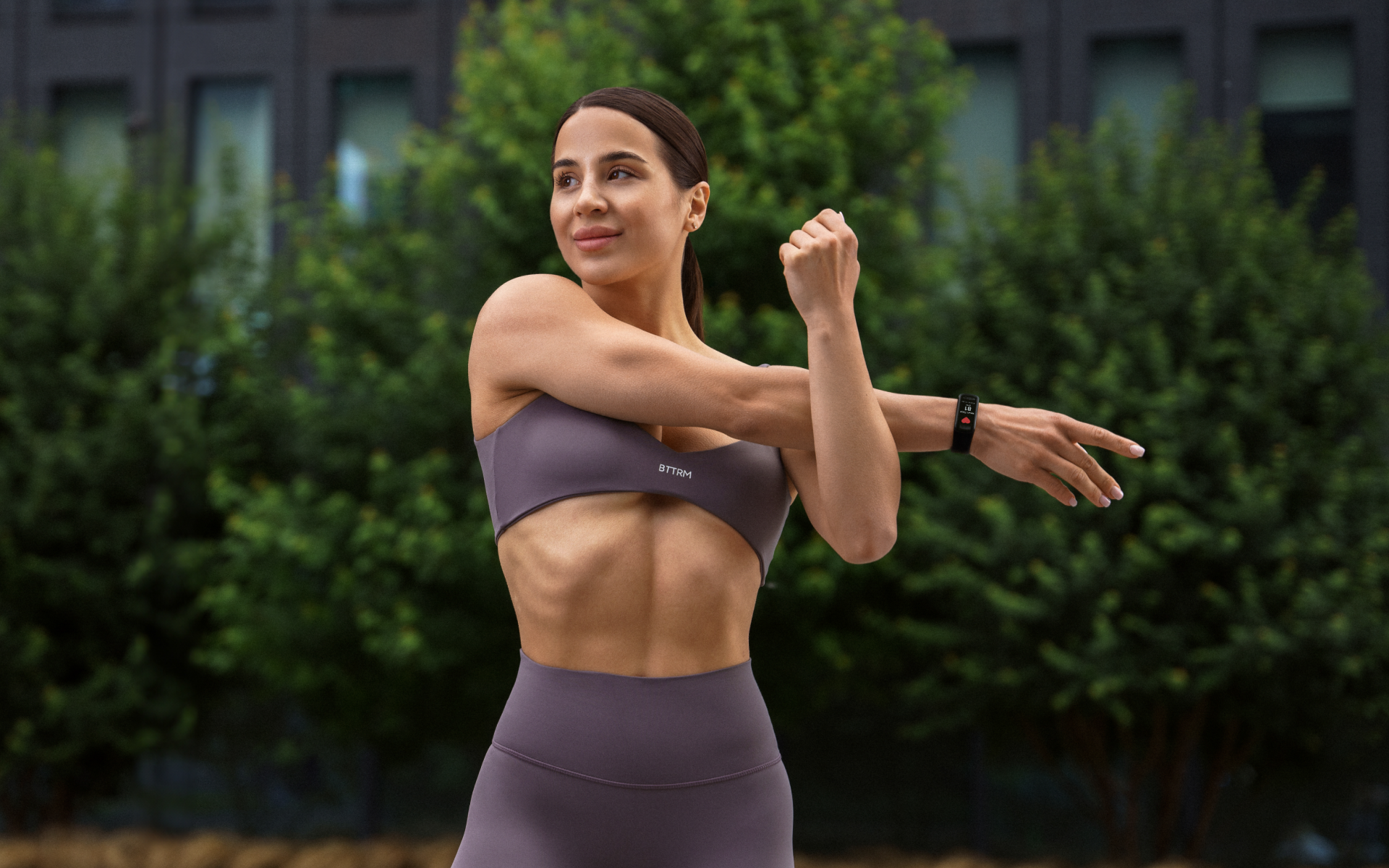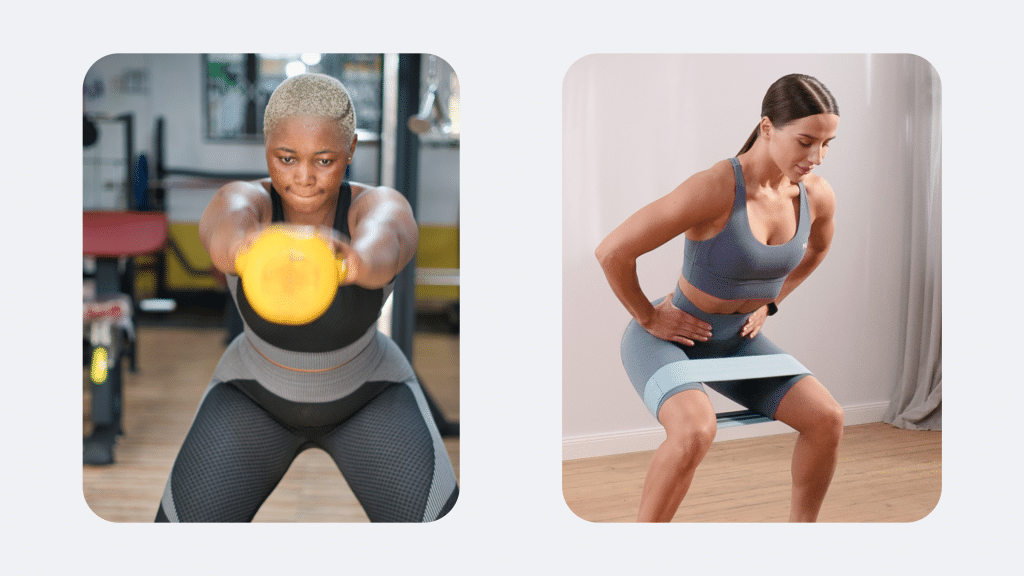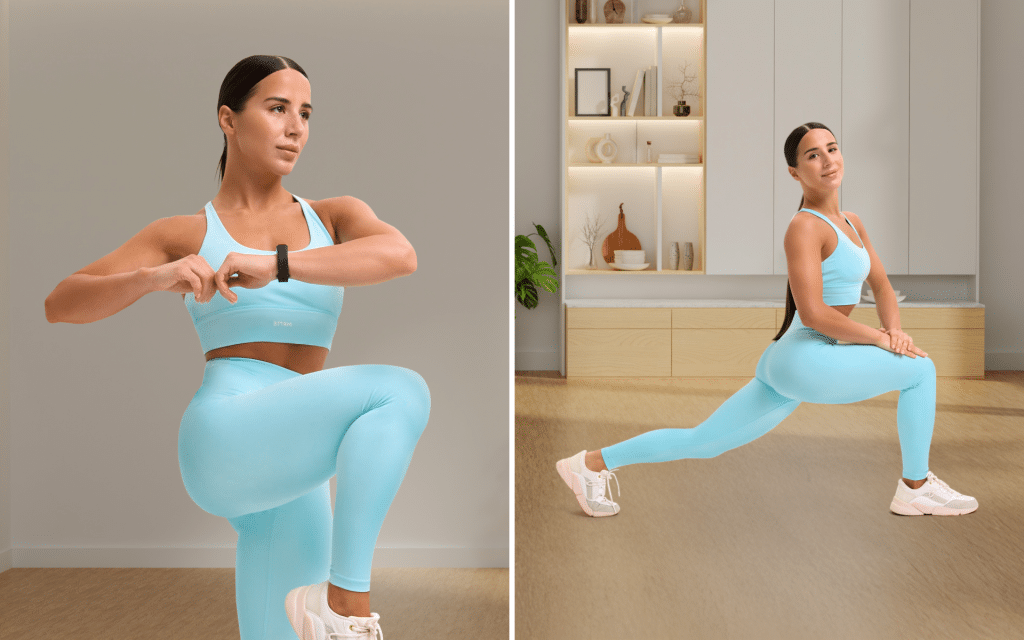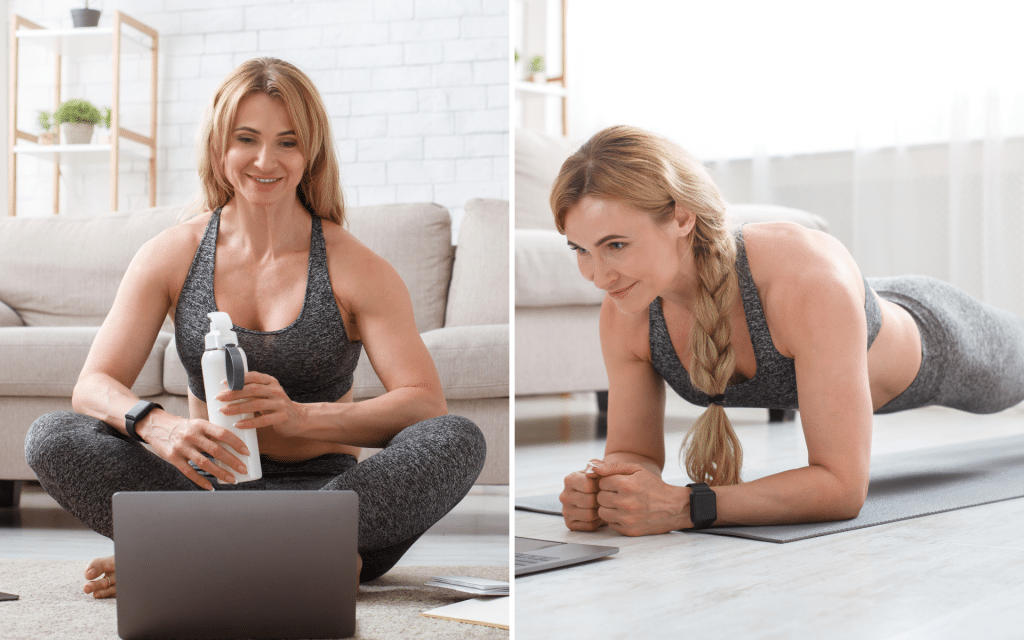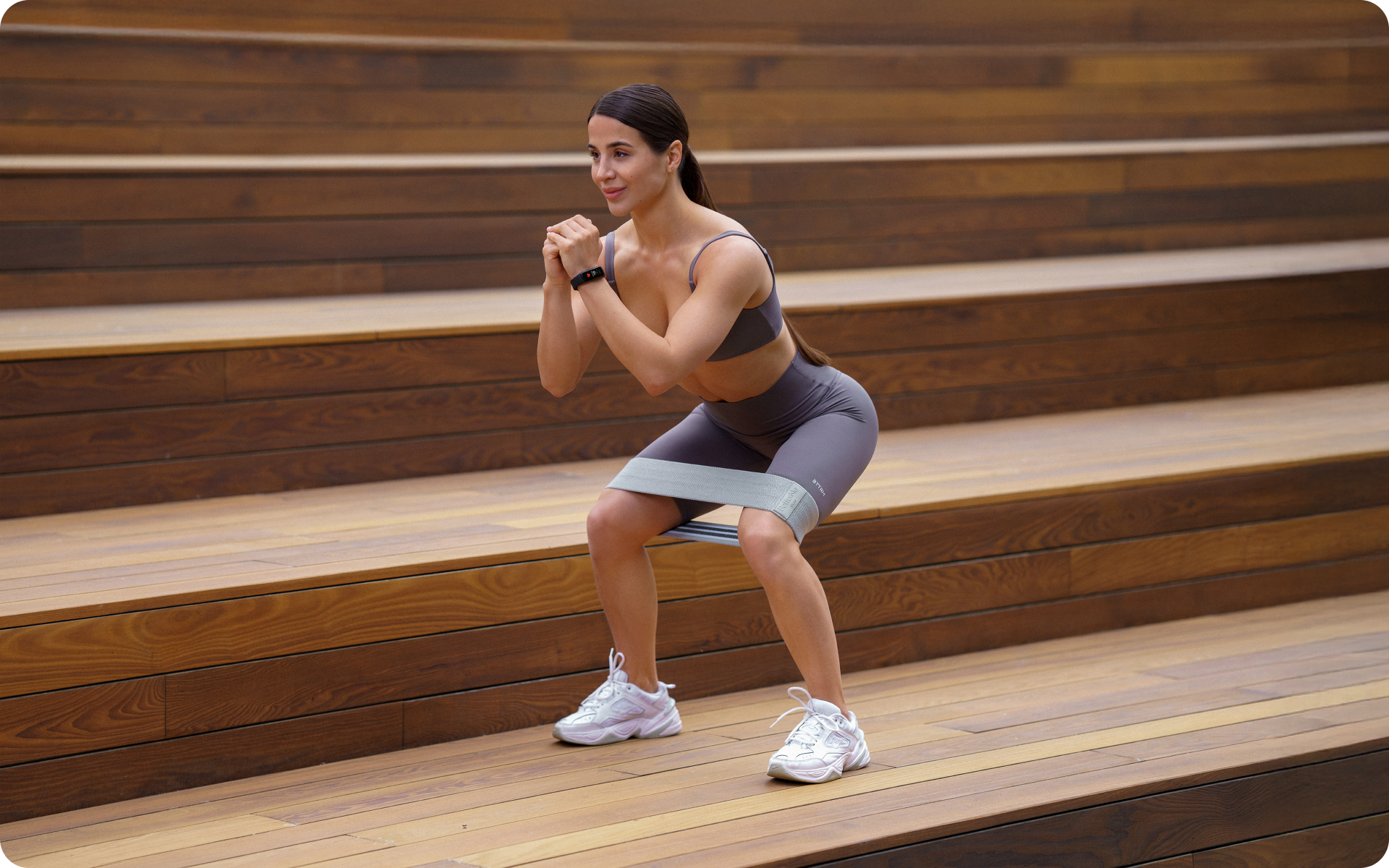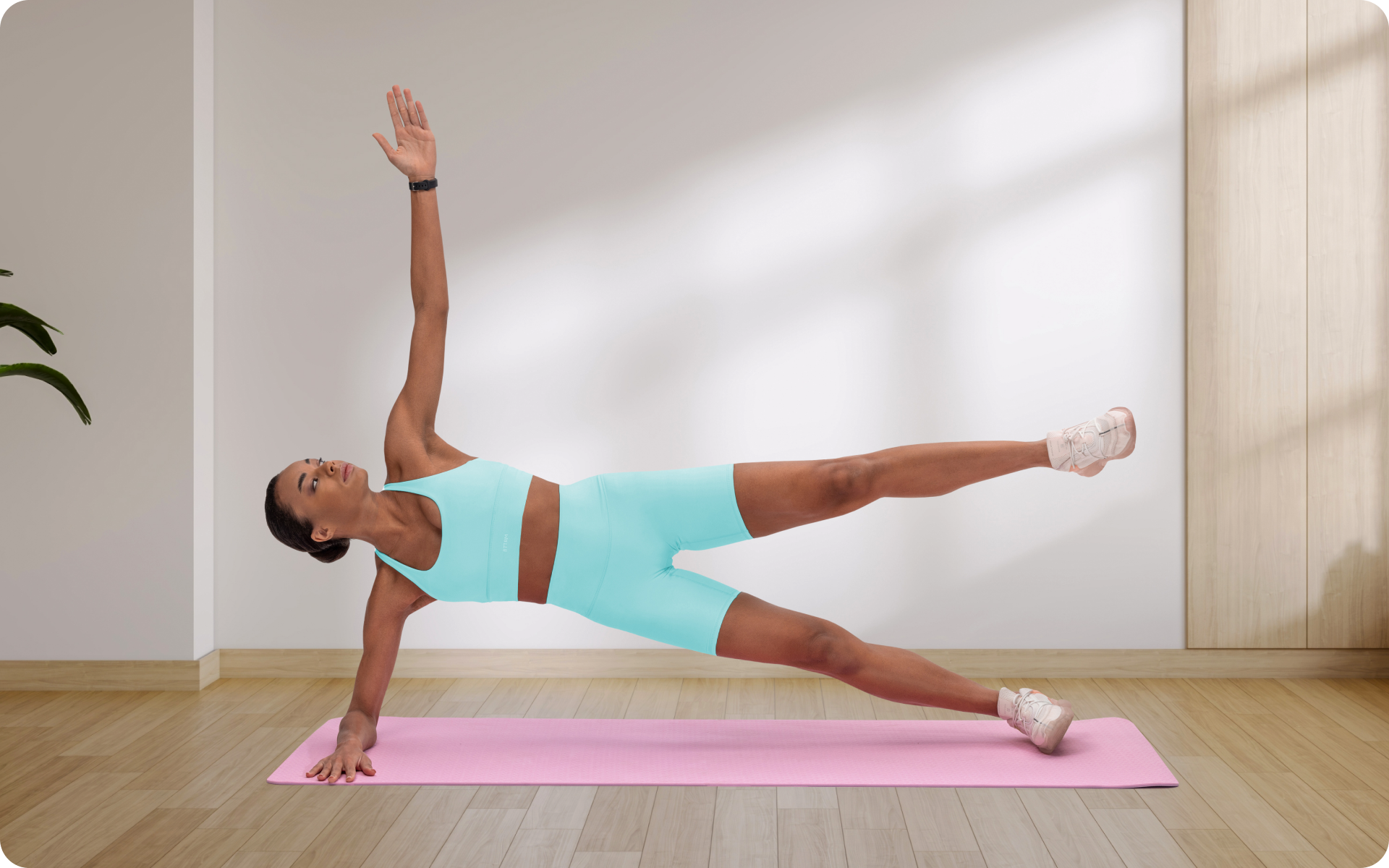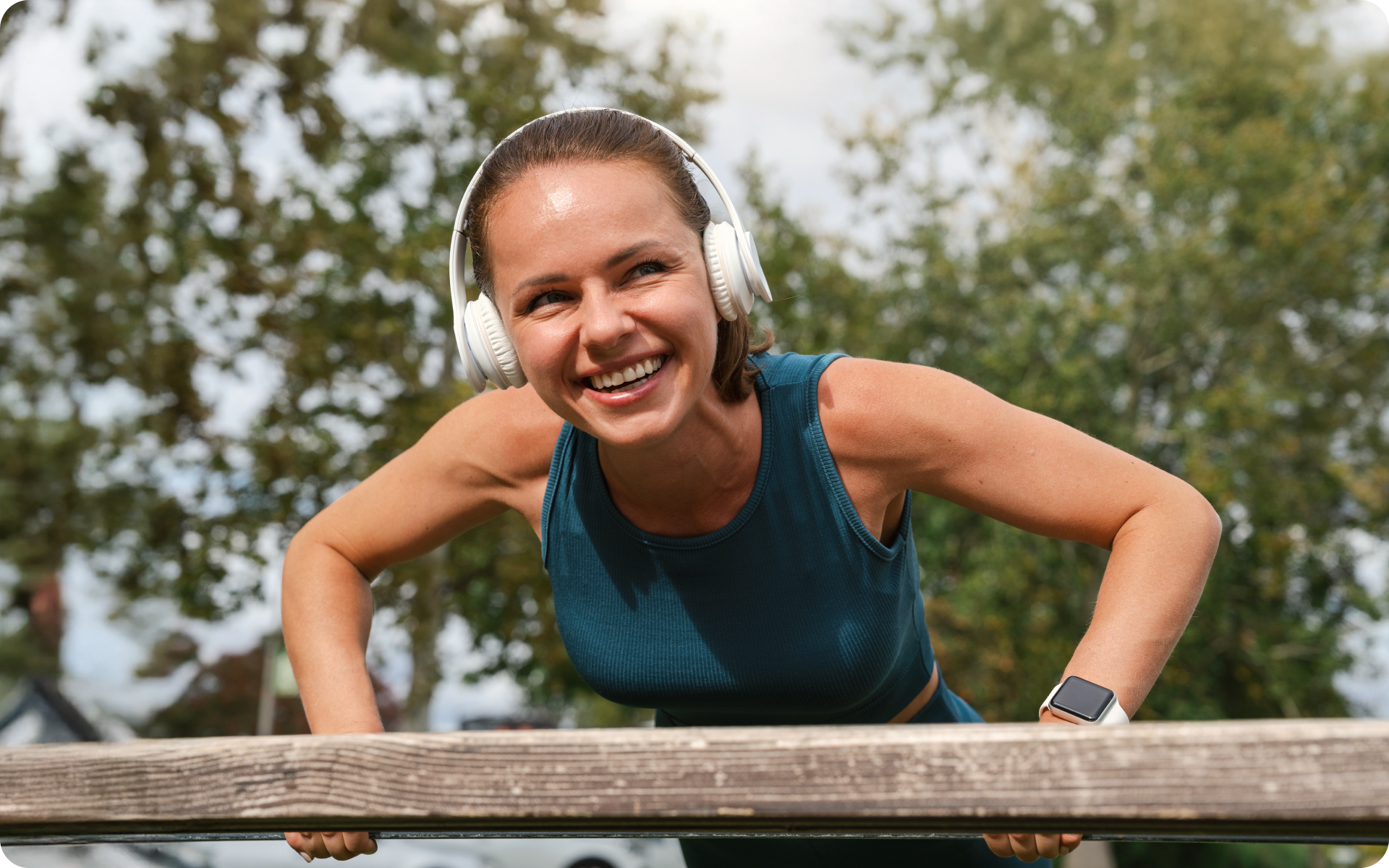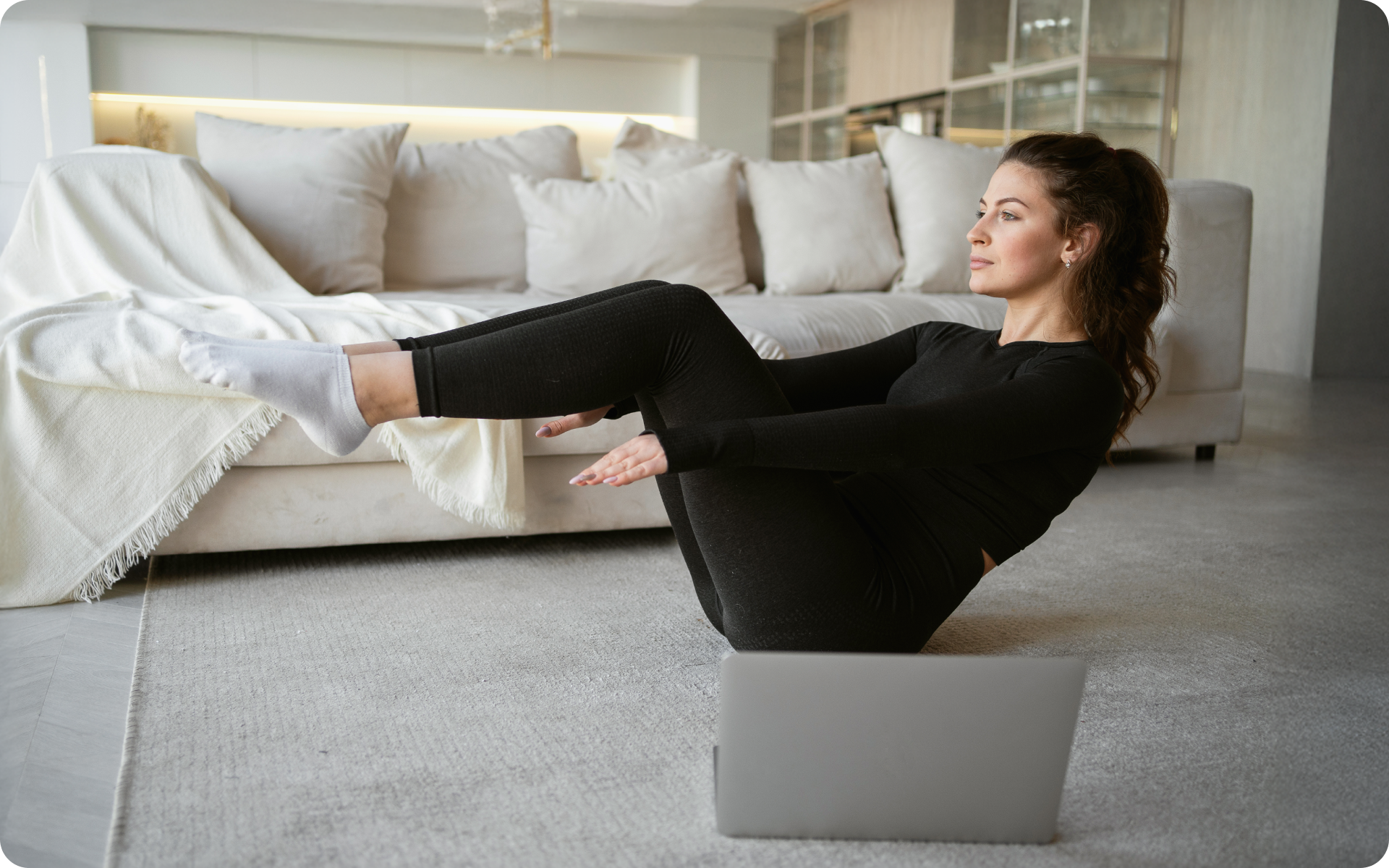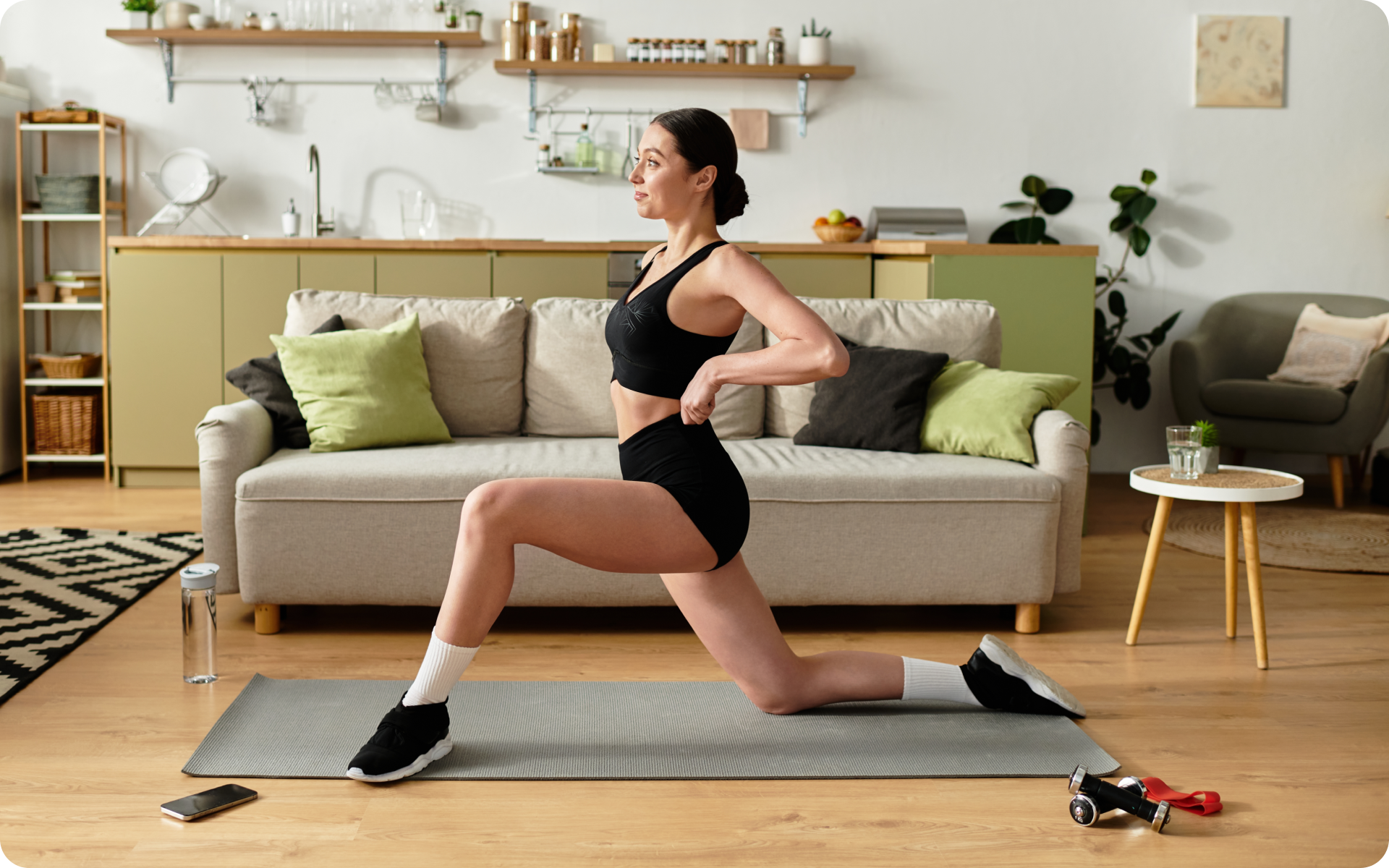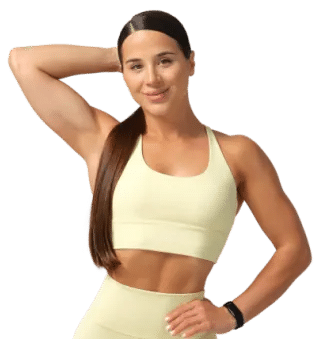For centuries, humans have turned to their own bodies as tools for building strength, endurance, and resilience. The ancient Greeks and Romans used bodyweight exercises to prepare for battle and competition. Modern militaries, gymnasts, and martial artists still rely on bodyweight training to develop functional strength and agility.
At its core, bodyweight training harnesses the body’s natural mechanics. It requires your body to work in a wide range of motions and planes, replicating functional movements that are needed in everyday life (1).
One type of bodyweight training is bodyweight conditioning. It sounds intense, and it can be, but conditioning simply means improving your body’s physical capacity through systematic training.
Here’s what you need to know about bodyweight conditioning and how and why to train without equipment.
What Is Bodyweight Conditioning?
Bodyweight conditioning is a focused approach to training that goes beyond just using your body as resistance.
It’s not simply about getting stronger or nailing a new skill. Instead, it’s about pushing your overall fitness capacity by targeting endurance, stamina, and functional performance.
The emphasis lies in conditioning your body to perform better over time, whether that’s being able to sustain high-intensity movements or recover more efficiently after exertion.
The Similarities and Differences of Bodyweight Conditioning vs Training
This is where bodyweight conditioning sets itself apart from bodyweight training. Bodyweight training is a broader category. It incorporates everything from building raw strength with exercises such as pull-ups to improving mobility with yoga-inspired flows or mastering complex movements such as human flags (2).
In a strict sense, even walking or running are considered bodyweight training.
However, bodyweight conditioning is more specific in its goals. Rather than prioritizing a specific skill or isolated strength, it aims to develop a balanced and resilient athletic base.
It places emphasis on rep ranges, rest times, and progression to improve your fitness capacity.
It often involves higher-intensity, circuit-style workouts designed to enhance cardiovascular health, stamina, and muscular endurance, alongside strength.
For example, a bodyweight training session may involve practicing pistol squats for sheer leg strength or core control. At the same time, bodyweight conditioning could mean stringing together squats, mountain climbers, and burpees in quick succession to elevate your heart rate and test your functional endurance. It’s not just about the moves you’re doing – it’s the way they’re sequenced and the intensity at which they’re performed that drives the conditioning effect.
Think of bodyweight conditioning as the glue that ties fitness components together. It doesn’t just make you stronger, it helps you perform better under physical stress. It teaches your body to handle fatigue and recover faster, which paves the way for lasting improvements in fitness, health, and day-to-day functionality.
What Are the 3 Types of Body Conditioning?
Body conditioning can be categorized into three main types: cardiovascular, strength, and flexibility and mobility conditioning.
- Cardiovascular Conditioning
This type of conditioning focuses on improving your heart and lung health. It involves activities that elevate your heart rate, such as running, jumping jacks, or high-intensity circuit training (3).
Cardio conditioning can improve your endurance and stamina, which allows you to push through longer workouts with less fatigue. It also has numerous health benefits such as boosting metabolism, reducing stress levels, and lowering the risk of chronic diseases.
- Strength Conditioning
As the name suggests, strength conditioning is all about building muscular strength and power using only bodyweight exercises. Moves such as push-ups, pull-ups, and planks are essential for developing functional strength in multiple muscle groups.
Strength conditioning can enhance overall physical performance and improve body composition. It also helps prevent injuries by building strong, stable muscles and joints (4).
Reasons why BetterMe is a safe bet: a wide range of calorie-blasting workouts, finger-licking recipes, 24/7 support, challenges that’ll keep you on your best game, and that just scratches the surface! Start using our app and watch the magic happen.
- Flexibility and Mobility Conditioning
This type of conditioning focuses on improving flexibility, mobility, and range of motion in the body. It includes stretching exercises such as yoga poses, dynamic movements such as lunges or shoulder circles, and foam rolling techniques.
Flexibility and mobility conditioning can help reduce muscle soreness, improve posture and movement patterns, and decrease the risk of injury.
- Bodyweight Conditioning Targets All 3 Types
Bodyweight conditioning targets all three types of conditioning to create a well-rounded, functional fitness routine. It incorporates elements of cardiovascular, strength, and flexibility and mobility training in one session.
By combining these different types of conditioning, you can improve your overall fitness capacity and achieve a balanced level of physical performance. This makes bodyweight conditioning an efficient and effective way to train without equipment.
Read more: The Ultimate Guide To A 15-Minute Bodyweight Workout
Is It Possible to Get Ripped with Only Bodyweight Exercises?
Bodyweight exercises can get you ripped.
A ripped physique combines two key components. First, there’s low body fat – without it, even well-developed muscles will remain hidden. Second is muscle definition, the product of consistent strength training that develops and highlights your muscles. With the right approach, bodyweight exercises alone can deliver exceptional results.
Bodyweight Exercises Are Perfectly Suited to Your Unique Anthropometry
Anthropometry refers to the study of body measurements, including proportions and weight distribution. Every person has a slightly different skeletal structure, limb length, and joint alignment, all of which influence how we move (5).
Bodyweight exercises naturally adapt to your personal anthropometry as the only load you’re working with is your own body. Unlike machines or weights, which are fixed in design and demand that you conform to their setup, bodyweight training allows for a customized experience.
For example, a push-up automatically adjusts to your arm length and torso ratio. This minimizes the risk of injury and maximizes muscular engagement. Over time, this personalized resistance ensures you target your muscles effectively while reducing strain on your joints.
Closed-Chain Movements Build Superior Strength and Definition
Bodyweight exercises are predominantly closed-chain movements (2). These involve a fixed distal point (such as hands or feet) in contact with a surface, which creates a natural and stable chain of motion. Push-ups and pull-ups are great examples.
Closed-chain movements activate multiple muscle groups simultaneously, working through natural movement patterns that mimic how your body functions in daily life (6).
One significant advantage here is improved joint stability. Take squats. They don’t just engage your quadriceps and glutes, they also work your core to stabilize your spine and protect your knees.
This comprehensive engagement sculpts defined, functional muscles while building resilience against injury. The compounded muscle activation also means you burn more calories, which can help you shed body fat, bringing you closer to that ripped look.
If your goal is to sculpt your lower body, check out our guide – Best Bodyweight Glute Exercises.
Progressive Overload Is Achievable Without Weights
A common myth is that bodyweight training can’t offer sufficient resistance for muscle hypertrophy, but that’s far from the truth. By tweaking variables such as tempo, angle, and exercise variations, you can progressively challenge your muscles just as effectively as with weights.
For example, an ordinary push-up can evolve into a decline push-up, a one-arm push-up, or even plyometric variations such as clapping push-ups. Each progression adds intensity or complexity, demanding more from your muscles and promoting growth. Similarly, pistol squats push your legs to their limits, which builds strength and definition without any external load.
High-Intensity Training Improves Fat Loss and Definition
Bodyweight workouts often blend strength-building with high-intensity intervals, such as circuit training or plyometrics. These methods elevate your heart rate, torch calories, and improve metabolic function long after your session ends (7).
As fat loss is essential for showcasing muscle definition, combining strength exercises with metabolic conditioning is a powerful combo. Think sets of pull-ups, burpees, and jump squats performed in quick succession.
These dynamic, full-body exercises also improve cardiovascular endurance, which helps you maintain a steady flow of energy and focus during workouts. Over time, this builds a leaner, more chiseled physique, while also ensuring lasting improvements in stamina.
Core Strength and Function Are Always in Play
A solid core is essential for a ripped look and bodyweight exercises constantly challenge these muscles. Movements such as planks, mountain climbers, and leg raises force you to engage your core for stability and balance. Even when performing exercises that aren’t specifically “core-focused”, such as squats or push-ups, your abdominal muscles work hard to stabilize the body throughout.
This constant activation defines your midsection and contributes to overall functional strength. A strong core improves posture, reduces the risk of injury, and gives your physique that athletic, toned appearance.
Simplicity Meets Consistency
One of the biggest advantages of bodyweight training is how accessible it is. There’s no need for expensive equipment, crowded gyms, or rigid schedules. All you need is a small space and your own determination. This simplicity makes it easier to stay consistent, which is truly the most important factor in achieving and maintaining a ripped body.
What Is an Impactful Bodyweight Conditioning Workout Plan?
This bodyweight conditioning workout plan is designed to challenge your entire body, improve strength, endurance, and muscle definition, and is convenient and adaptable to any fitness level.
Structure of the Plan
- Dynamic Warm-Up (5-7 minutes): Priming your body for movement (8).
- Main Workout (20-30 minutes): Combining strength, endurance, and cardiovascular conditioning.
- Cool-Down (5 minutes): Static stretching to help with recovery and improve flexibility (8).
Dynamic Warm-Up (5-7 Minutes)
This phase gets your blood flowing, preps your muscles, and eases your joints into activity.
- Arm Circles (30 seconds forward, 30 seconds backward)
Loosen your shoulders and improve mobility. - Dynamic Lunges with Reach Overhead (6 reps per leg)
Step forward into a lunge while extending your arms overhead. Activates the hips, legs, and spine. - Cat-Cow Stretch (6 slow cycles)
Mobilize your spine while warming up your core. - High Knees (30 seconds)
Gently elevate your heart rate and engage your hip flexors and core. - Bodyweight Squats (10 reps)
Loosen your lower body while practicing controlled movements.
Main Workout (20-30 Minutes)
Complete 3 rounds of the following circuit with minimal rest between exercises. Rest for 1-2 minutes between rounds, depending on your fitness level.
1. Push-Ups
- Reps: 10-15 or to fatigue
- Focus: Upper-body strength, chest, shoulders, and triceps.
- Progression: Kneeling push-ups (beginner) → Standard push-ups → Decline push-ups (advanced).
2. Split Squats
- Reps: 10 per leg
- Focus: Quads, glutes, and stability.
- Progression: Use a step for a rear-foot-elevated variation or slow the tempo for added difficulty.
3. Plank With Shoulder Touches
- Duration: 30-40 seconds
- Focus: Core, shoulder stability, and anti-rotation muscles.
- Progression: Elevate feet for a harder plank or tap hands further forward for an extended reach.
4. Mountain Climbers
- Duration: 40 seconds
- Focus: Cardiovascular fitness and abdominal engagement.
- Progression: Increase speed or add a diagonal twist to strengthen obliques.
5. Pistol Squats
- Reps: 6-8 per leg
- Focus: Single-leg strength, balance, and flexibility.
- Progression: Perform seated pistol squats (beginner) → Partial range → Full range.
6. Burpees
- Reps: 10-12
- Focus: Full-body conditioning, endurance, and calorie burn.
- Progression: Add a tuck jump at the top for extra intensity.
BetterMe: Health Coaching app helps you achieve your body goals with ease and efficiency by helping to choose proper meal plans and effective workouts. Start using our app and you will see good results in a short time.
Cool-Down (5 Minutes)
Stretch and focus on longevity by maintaining mobility and helping with recovery.
- Child’s Pose (30 seconds)
Stretch through the spine and hips. - Seated Forward Fold (30 seconds)
Lengthen the hamstrings and lower back. - Chest Opener Stretch (30 seconds per side)
Open up shoulders and chest. - Butterfly Stretch (1 minute)
Loosen up tightness in the hips. - Deep Breathing (1 minute)
Lie on your back, place your hands on your belly, and focus on slow, deep breaths to relax.
How to Adapt the Plan
Beginner:
- Reduce the number of reps or set a timer for shorter rounds (e.g. 2 rounds or 15-20 minutes).
- Use modifications such as kneeling push-ups or assisted squats.
Advanced:
- Add a 4th round to the main workout.
- Incorporate explosive variations such as plyometric push-ups or jump lunges.
Read more: Lower Back Weight Exercises for a Stronger Spine
What Is the 5-10-15 Bodyweight Workout?
The 5-10-15 workout involves performing 5 reps of a high-intensity exercise, 10 reps of a moderately intense exercise, and 15 reps of a lower-intensity exercise and is often repeated in circuits.
The concept has some scientific backing, particularly regarding its ability to improve fitness through varied intensity levels. A study on a similar 5-10-15 running protocol demonstrated benefits including reduced body fat, increased lean body mass, and improved performance metrics (9).
In addition, research has highlighted that when performed with proper intensity and volume, bodyweight exercises can rival traditional weight training for building strength and endurance (10).
This makes the 5-10-15 workout an effective and efficient tool for overall fitness.
The body weight paradox refers to the unique effectiveness of bodyweight exercises in strength and conditioning. Despite not requiring external weights, they can still build significant strength by leveraging your body mass as resistance. This challenges the traditional idea that heavier equipment is always necessary for muscle development. Discover the best Bodyweight Exercises for Women that will help you build strength and endurance and tone your body in our previous post. Body conditioning can range from moderate to intense, depending on your fitness level and the exercises you choose. While it challenges both strength and endurance, it’s adaptable, which makes it accessible to beginners while still offering advanced practitioners a tough workout. Yes, you can get fit with only bodyweight exercises. They improve your strength, endurance, flexibility, and cardiovascular health (11). Incorporating progressive overload, closed-chain movements, and dynamic routines ensures effective muscle development and fat loss without equipment. Check out our Basic Bodyweight Workout guide to help you get started. According to the Centers for Disease Control and Prevention (CDC), adults require at least 150 minutes of moderate-intensity aerobic exercise each week, in addition to muscle-strengthening activities on two or more days (12). This could include brisk walking, cycling, swimming, dancing, or using a rowing machine. However, the healthiest exercise is ultimately one you enjoy and can maintain regularly.Frequently Asked Questions
What is the body weight paradox?
Is body conditioning hard?
Can you get fit with only bodyweight exercises?
What is the healthiest exercise?
The Bottom Line
Bodyweight conditioning is a training method that can help you achieve a lean, strong physique. By combining strength, endurance, and cardiovascular conditioning in a simple yet effective workout plan like the one we’ve outlined above or incorporating the 5-10-15 workout into your routine, you can work toward your fitness goals and see real results.
DISCLAIMER:
This article is intended for general informational purposes only and does not serve to address individual circumstances. It is not a substitute for professional advice or help and should not be relied on for making any kind of decision-making. Any action taken as a direct or indirect result of the information in this article is entirely at your own risk and is your sole responsibility.
BetterMe, its content staff, and its medical advisors accept no responsibility for inaccuracies, errors, misstatements, inconsistencies, or omissions and specifically disclaim any liability, loss or risk, personal, professional or otherwise, which may be incurred as a consequence, directly or indirectly, of the use and/or application of any content.
You should always seek the advice of your physician or other qualified health provider with any questions you may have regarding a medical condition or your specific situation. Never disregard professional medical advice or delay seeking it because of BetterMe content. If you suspect or think you may have a medical emergency, call your doctor.
SOURCES:
- The advantages of body-weight exercise (2024, health.harvard.edu)
- Bodyweight Training: A Return To Basics (2010, journals.lww.com)
- Simple Bodyweight Training Improves Cardiorespiratory Fitness with Minimal Time Commitment: A Contemporary Application of the 5BX Approach (2021, ncbi.nlm.nih.gov)
- Strength and Conditioning (n.d., physio-pedia.com)
- Anthropometry, Body Composition and Resting Energy Expenditure in Human (2019, ncbi.nlm.nih.gov)
- Closed Chain Exercise (n.d., physio-pedia.com)
- Evidence-Based Effects of High-Intensity Interval Training on Exercise Capacity and Health: A Review with Historical Perspective (2021, ncbi.nlm.nih.gov)
- Warm Up, Cool Down (2024, heart.org)
- High-intensity intermittent “5–10–15” running reduces body fat, and increases lean body mass, bone mineral density, and performance in untrained subjects (2018, link.springer.com)
- Calisthenics: An effective, low-frills way to stay fit (2024, health.harvard.edu)
- What Counts as Physical Activity for Adults (2023, cdc.gov)
